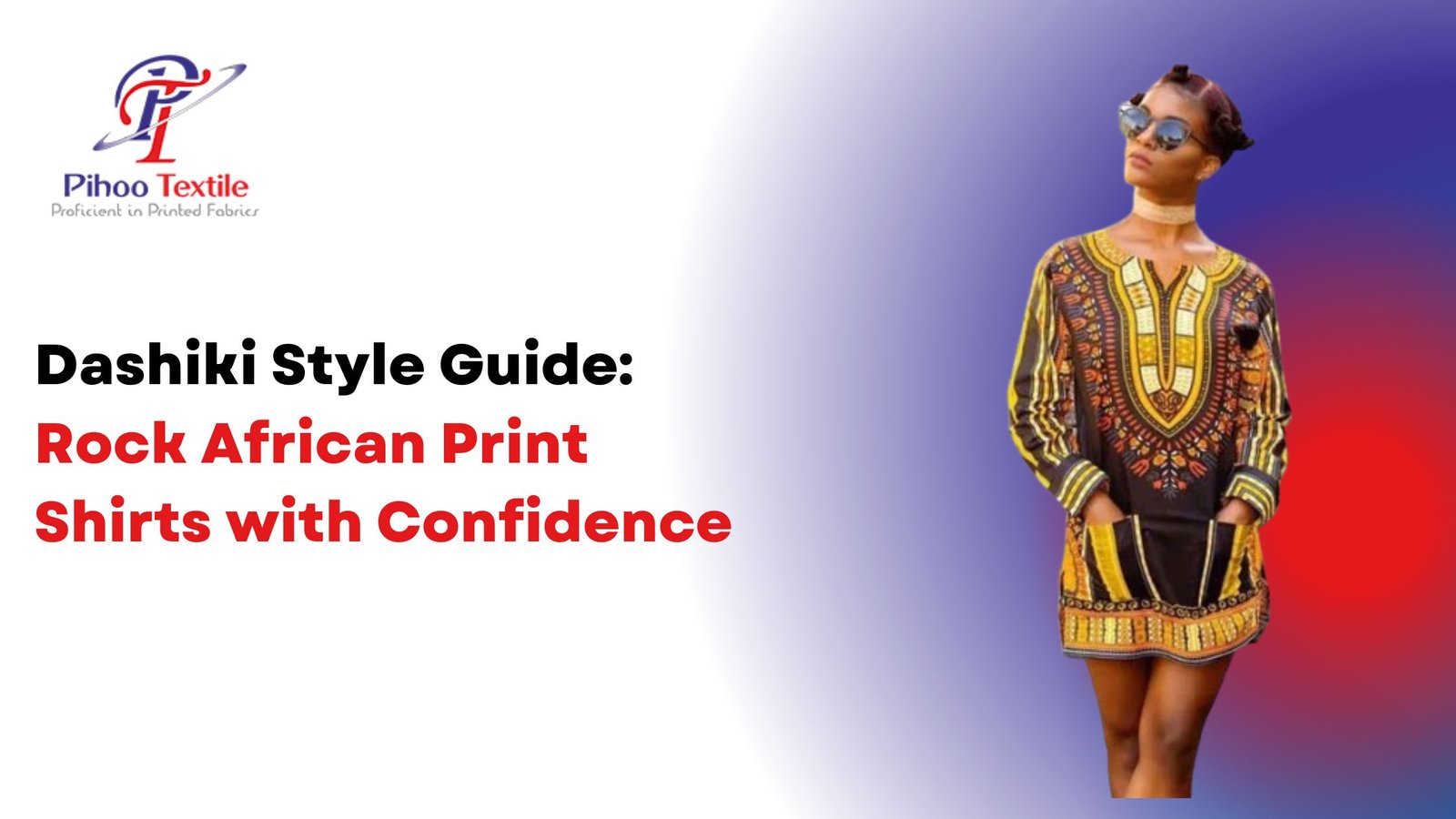Dashiki Style Guide: Rock African Print Shirts with Confidence
Dashiki Style Guide: Rock African Print Shirts with Confidence
Most people see a Dashiki and think “colorful shirt.” They miss the context. The Dashiki carries West African heritage, Civil Rights resistance, and modern fashion versatility all in one loose-fitting garment. Yet buyers struggle with a basic question: how do you wear something this bold without looking like you’re headed to a costume party?
The Dashiki works across casual outings, office settings, and formal events when you understand its structure and styling rules. Here’s the truth most fashion guides skip: the garment’s loose fit and vivid patterns demand specific pairings to maintain balance. Get it right and you stand out with cultural authenticity. Get it wrong and the outfit overwhelms everything else.
This guide breaks down Dashiki history, modern styling approaches for different occasions, accessorizing tactics, and care practices that preserve fabric quality. You’ll learn what works for casual wear, office environments, and evening events, plus how to spot authentic construction.
Understanding the Dashiki
The word “dashiki” comes from the Yoruba “dansiki,” rooted in the Hausa phrase “dan ciki” meaning “inner garment”. What started centuries ago as a practical underlayer in hot West African climates evolved into proud outerwear recognized worldwide.
By the 1960s and ’70s, the Dashiki transformed into a symbol of Black pride and resistance during the Civil Rights Movement. Leaders wore it during protests and rallies as a statement against racism and Western beauty standards. Wearing a Dashiki during that era carried political weight.
Today’s Dashiki blends tradition with modern cuts—tailored fits, various sleeve lengths, and contemporary materials while maintaining its signature V-neck embroidery and vibrant geometric patterns. The garment remains unisex and adaptable across generations.
Casual Styling Approaches
Everyday Wear
Pair a Dashiki shirt with solid-colored bottoms to let the garment be your outfit’s centerpiece. Denim jeans, shorts, or chinos in neutral colors like black, white, or navy work best. This pairing ensures the Dashiki’s vibrant patterns remain the focal point while casual bottoms provide a laid-back foundation.
Finish with sneakers or sandals. Add a denim jacket or simple hoodie for layering if weather requires it. The goal: keep everything else simple so the Dashiki does the talking.
Summer and Festival Looks
Dashiki shirts suit hot weather perfectly due to their lightweight, breathable cotton construction. Pair a bright Dashiki with swim shorts for beach outings or lightweight skirts for functional summer style.
Oversized and longline fits dominate current streetwear and festival fashion trends. These looser silhouettes offer comfort during outdoor events while making bold visual statements. Add sandals, a wide-brimmed hat, and sunglasses to complete the look.
Office-Ready Styling
Believe it or not, Dashikis work in professional settings when styled correctly. Choose one with subtler colors rather than the brightest patterns available. Pair it with dress pants or a pencil skirt to maintain professional appearance.
Layer with a neutral-colored blazer to balance the Dashiki’s vibrancy while allowing patterns to show through. This creates what some call a “casual-official” look that breaks office monotony without sacrificing professionalism.
Accessorize minimally—simple jewelry, closed-toe flats or heels. Skip the tie unless you’ve buttoned the top button and chosen a solid-color tie that blends with the shirt’s palette. The contrast between formal structure and African print creates distinctive professional style.
Evening and Formal Events
Dashikis elevate to evening wear through fabric and pairing choices. Select Dashikis with metallic threads or silk-like materials for elevated appearance. These fabrics catch light differently than standard cotton, adding sophistication.
Pair with dark jeans or tailored trousers and add a leather or bomber jacket for edge. Stylish loafers or ankle boots enhance the outfit’s formal quality. Bold jewelry or sleek watches round out the evening aesthetic.
For truly formal occasions, Dashiki suits—matching top and trousers, sometimes with a kufi cap—provide ceremonial appropriate wear. These sets feature more elaborate embroidery, higher-quality fabrics, and carefully selected colors.
Accessorizing Your Dashiki
The Minimalist Approach
With bold patterns, accessories should stay minimal. Dashiki shirts already provide visual complexity. Adding competing elements creates chaos rather than style.
Choose plain shoes, belts, and simple watches. This allows your Dashiki to remain the attention center without competition. If your shirt screams with color, your accessories should whisper.
Statement Pieces That Work
When you do accessorize, opt for chunky necklaces or bracelets that complement the Dashiki’s existing colors rather than introducing new ones. Beaded jewelry works particularly well, echoing traditional African aesthetics.
Headwear adds cultural authenticity. African headwraps, trendy hats, or kufi caps complete the look while honoring the garment’s heritage. Earth-tone accessories balance vibrant shirts effectively.
Identifying Authentic Construction
Authentic Dashikis use cotton or quality cotton-blend fabrics with good weight—breathable but sturdy. Touch the fabric. If it feels plasticky or overly stiff, that signals lower quality.
The V-neck embroidery should show neat, secure, symmetrical stitches. If embroidery looks printed rather than sewn, or the neckline design appears fuzzy or unclear, authenticity drops. Sharp pattern edges and vibrant colors that don’t bleed indicate quality printing.
Check seams, hems, and stitching alignment. Quality finishing reveals how much care went into construction. Authentic Dashikis maintain their color and structure through multiple washes.
Care and Maintenance
Cold wash and air dry preserve Dashiki colors best. Hot water and machine drying cause faster fading and fabric breakdown. For handmade or vintage pieces, hand washing provides gentler treatment.
Iron inside out on low heat to protect prints and embroidery. High heat damages synthetic fibers sometimes blended with cotton in modern Dashikis. Proper care extends garment life significantly.
Store Dashikis folded rather than hung to prevent stretching. Keep them away from direct sunlight when storing long-term, as UV exposure fades even quality dyes over time.
Conclusion
Dashiki styling comes down to balance. Let the shirt’s bold patterns dominate by keeping everything else—bottoms, shoes, accessories—simple and neutral. Choose appropriate fabric weights and fits for different occasions. Understand that this garment carries cultural weight beyond fashion, and wear it with that awareness.
Pihoo Textile offers authentic Dashiki fabrics and ready-made garments with traditional embroidery and quality cotton construction. Our collection includes casual and formal styles suitable for every occasion. Visit pihootextile.com to explore genuine Dashiki shirts, request fabric samples, or place custom orders. Wear African heritage with confidence and proper craftsmanship.


